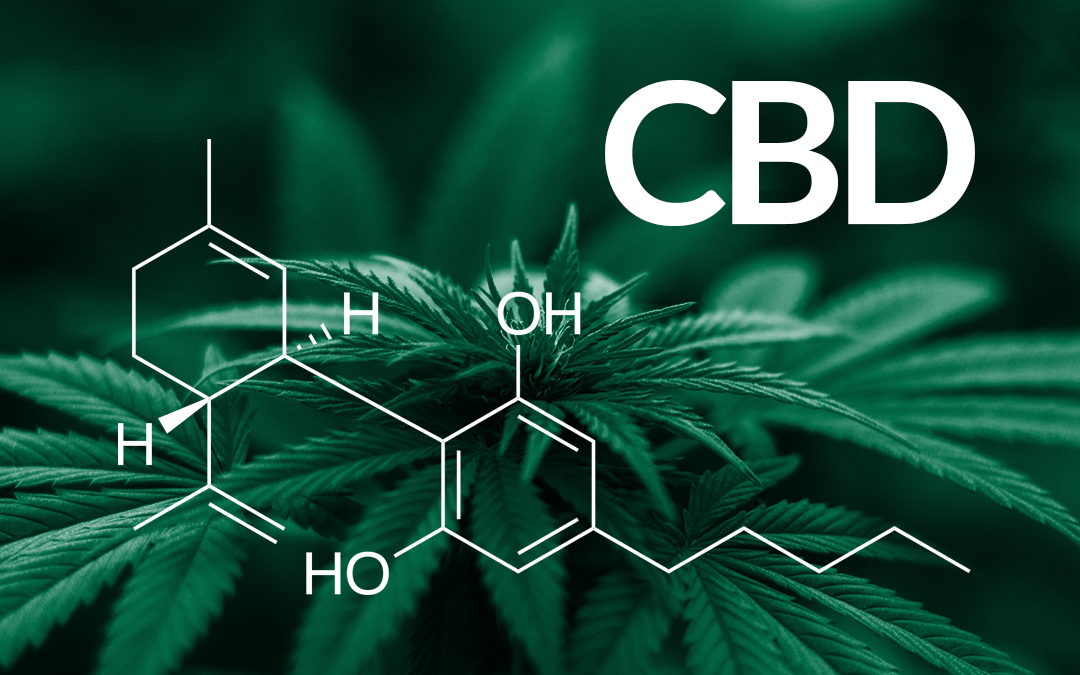The short answer is – yes. CBD, cannabidiol, can help with many medical issues, just not as many as you see claims about. But I want to focus on what it CAN do to help you – not what it can’t. And, most importantly, how it is different from THC and how to identify both high-quality products and the right dose of CBD to take.
Cannabis includes industrial hemp plants grown mostly for CBD as well as the shorter, bushier marijuana plants grown mostly for the psychoactive THC constituents. Marijuana has much more THC and less CBD. Industrial hemp has double the amount of CBD as marijuana and has very little THC.
CBD has no psychoactive properties and can be purchased online and shipped almost anywhere, as long as it has less than 0.3 % THC and comes from hemp plants, not marijuana plants (even though the 2018 Farm Bill removed the hemp plant from the heavily controlled and federally illegal list of medicinal herbs, like marijuana, three states, Nebraska, Idaho, and South Dakota, still consider CBD illegal even if derived from hemp). There are medical benefits to THC as well, especially for mood and anti-cancer effects, but the big boom right now is in CBD, so I’m going to focus on that for this blog post.
A Little Botany and Biology (the Story of Bliss).
Cannabis has many non-THC cannabinoids other than CBD, and our body and brain produce our own cannabinoids as well, called endocannabinoids. Interestingly, the main endocannabinoid we make is called Anandamide, which is the Sanskrit term for “Bliss.” These cannabinoids are such plentiful and active compounds in the body that there are special receptors for them all – called CB1 and CB2. CB1 is found mostly in the brain but can also be found throughout the body. This is the receptor that leads to the “high” from THC. CB2 is especially plentiful on immune cells, but there are actually CB2 receptors on virtually every cell of the body, meaning CBD can have an impact on nearly every tissue.
CBD’s primary role is to maintain balance in the body – what is called a state of homeostasis. This is especially evident in the nervous system, where it helps balance the neurotransmitters that cause excitation (glutamate) and those that are more calming (GABA). In fact, CBD has its own impact on the immune and nervous systems.
Basically, the non-THC cannabinoids, including CBD, are neuromodulatory, neuroprotective and anti-inflammatory. What does that mean?
- Cannabinoids help with pain by affecting our brain’s perception of pain as well as by decreasing inflammation. CBD can be especially helpful in chronic pain syndromes, like fibromyalgia, and in recovery from strain, like after vigorous exercise. Even very hard to treat pain conditions such as neuropathy from HIV and complex regional pain syndrome (CPRS) has shown benefit from CBD.
- What about anxiety? Since CBD helps balance the nervous system between excitation and relaxation, it can help with anxiety and sleep.
- CBD decreases overall inflammation, which is the process behind a lot of pain as well as damaging effects from aging and from chronic disease. This is how some of the topical products out there can help with pain and inflammation in the muscles or joints.
- What about for sleep? CBD alone may help a little, but it works best either as a 1:1 ratio with THC or at least with other calming herbs.
- How do you take CBD? I recommend the oils that can be used sublingually (under the tongue) and then swallowed. I just don’t think smoking or vaping is healthy for the lungs and most vaporizers require the oil to be mixed with chemicals to make it burn more evenly. These chemicals definitely are not good for the lungs. Letting CBD oil sit under your tongue for 30 seconds or so before swallowing can help some of it be absorbed across your mucous membranes. The rest will get absorbed in the GI tract.
If you take opioids every day for chronic pain (such as Percocet or Vicodin), CBD can actually make these medications stronger, so using CBD can help you to taper down how much medication you need.
Other drug interactions to look out for include blood thinners, birth control pills, and any medication that warns you not to take with grapefruit juice, like some statin drugs (lovastatin, atorvastatin, and simvastatin as well as some antihistamines like Allegra). Like grapefruit juice, CBD can affect how those drugs get broken down in the liver, so don’t use CBD if you are on them.
What to look for: there are so many CBD products out there, it’s easy to get tricked into buying something that isn’t the real deal. Look for a product that doesn’t just say “hemp oil.” It needs to specifically say it has CBD derived from hemp oil, because not all hemp oil has enough CBD to have any effect. And look for organic, non-GMO hemp derived CBD that doesn’t have added ingredients like vegetable glycerin. It should say how many milligrams of CBD are in a drop or squirt of the oil. (A dropper full is usually around 15-20 drops and is equivalent to around 1 ml (which is 1 cc). A teaspoon is 5 ml.
For example, Green Gorilla Pure CBD lists the exact amount of CBD is in each pump of oil.
In terms of side effects, they are minimal. As with any compound, you can have an allergic reaction and some individuals may have unusual side effects, but by and large, CBD is very well tolerated. In terms of dose, I usually recommend starting with around 30 mg at least an hour away from food. You can increase the dose – even up to 300 mg – but it’s best to gradually notch up the dose to find what amount has the effect you are looking for.
The Bottom Line:
CBD is safe and effective for many conditions, especially pain, inflammation, sleep, and anxiety. Look for the exact amount of CBD in an organic product, and start with CBD oil or topical preparations. Happy 420 Day!
Looking for more benefits of CBD for training and beyond? Check out this article about how athletes are harnessing the power of this new botanical here.
Sign up for my newsletter and get the best scientifically-validated health tips and articles sent to your inbox.
Myles Spar, MD, MPH is board-certified in Internal Medicine and in Integrative Medicine. As a clinician, teacher and researcher on faculty of two major medical centers, he has led the charge for a more proactive, holistic and personalized approach to care that focuses on cutting edge technology and preventative care. Dr. Spar has traveled with the NBA, presented a TEDx Talk, appeared on Dr. Oz, and been featured in publications such as the Men’s Journal and the Los Angeles Times.


